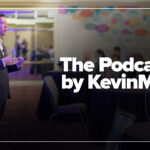As a physician, I am trained to diagnose not just the presenting symptom but the underlying pathology. This is the same lens through which many of us in the medical community view the epidemic of American violence. For years, organizations from the AMA to the CDC have called it a public health crisis. This is not merely a metaphor; it is a clinical framework pioneered right here in Chicago by epidemiologist Dr. Gary Slutkin. His Cure Violence model, developed at the University of Illinois Chicago, proved that violence acts like a contagious disease and can be stopped using trained “interrupters.”
Yet, as a nation, we have failed to apply this diagnosis on a macro scale, struggling to move beyond treating the recurring outbreaks. Last week, our nation’s chronic illness presented with an acute fever: the assassination of conservative commentator Charlie Kirk.
On September 10, the nation was jolted by Kirk’s murder during a university speech. The news cycle was, justifiably, consumed by this act of political violence. Yet, lost in the noise was another, tragically familiar event from that same week: a school shooting that barely registered on the national consciousness.
The assassination has been rightly treated as a national crisis. The school shooting was a grim footnote. This disparity in our attention is, in itself, a diagnostic. It reveals a nation tragically habituated to one form of violence but shocked by another, forcing us to ask why. The answer, I believe, is that the assassination exposed the specific pathology of our nation’s violence, while the school shooting was merely the recurring, numbing symptom of the same disease, a symptom so common it tragically obscures the diagnosis itself.
The pathogen: rhetoric as a social toxin
The core of our national sickness is a social and political “shame bind,” a toxic symbiosis between two of our most cherished constitutional rights. The first component is the First Amendment, which, in its modern application, protects even the most inflammatory and dehumanizing speech.
From a public health perspective, this kind of rhetoric functions as a pathogen. Language that frames political opponents or minority groups as “demonic,” “vermin,” or an existential “threat” is not merely speech; it is a toxin. Like a virus, it weakens the immune system of our civil discourse and can lethally radicalize susceptible individuals. It creates a moral permission structure for violence.
Tragically, Charlie Kirk became a victim of the very political climate he helped to shape. His assassination is a brutal case study in how the pathogen of inflammatory speech can, in the right environment, create unpredictable and devastating outcomes. Our profound unwillingness to acknowledge this clear etiological link has left us vulnerable. Pundit Matthew Dowd was fired from MSNBC almost immediately for stating the obvious: “Hateful thoughts lead to hateful words, which then lead to hateful actions.” This societal denial is akin to refusing to believe that contaminated water causes cholera.
The vector: guns as the delivery system
A pathogen, however, needs a vector to be effective. The toxin of hate speech is made lethally efficient by the vector of readily available firearms. This is the second component of our shame bind: the Second Amendment.
The historical understanding of this amendment, best articulated by former Justice Stephen Breyer in his Heller dissent, was that of a collective right tied to militia service for the common defense. This interpretation has been corrupted into a nearly unlimited individual right to own weapons of war, a bastardization that has led directly to our current crisis.
In any other public health crisis, our approach would be clear. If you cannot eliminate the pathogen (toxic speech, protected by the First Amendment), you must aggressively control the vector (the firearms). We do this with mosquito abatement to stop Zika; we do it with sanitation to stop dysentery. Yet, when it comes to guns, we refuse to take the most basic preventative measures, leaving the primary vector for our political violence entirely unchecked.
Diagnosis and treatment: a systemic and shameful failure
This brings us to the shame bind. America is trapped in a system where the First Amendment is used to protect the speech that creates the motive for violence, and the Second Amendment is used to protect the weapons that provide the means.
The result is political paralysis and a deep, unspoken national shame. The horrifying conclusion is the de facto elevation of violence to the status of free speech. The right to say, “”You are a threat that must be eliminated,” is functionally merging with the right for someone to act on that sentiment with an easily acquired firearm.
As health care professionals, we know that when a treatment fails, the diagnosis may be incomplete. Our current approach (treating each shooting as an isolated crime) has clearly failed. This essay proposes a more specific diagnosis for the underlying social pathology: the “shame bind.” It is a systemic disease with a clear etiology, a known vector, and a suffering population.
A treatment plan for a public health crisis does not require eliminating the pathogen, but it demands aggressively controlling the vector. This means shifting the conversation from absolutism to regulation, treating firearms with the same public health seriousness we apply to automobiles or pharmaceuticals. Measures like universal background checks, red flag laws, and secure storage requirements are not political attacks; they are the basic, evidence-based public health interventions necessary to save lives. We must use this more precise diagnosis to implement a treatment plan before we lose the patient entirely.
Brian Lynch is a family physician.





















![Rebuilding the backbone of health care [PODCAST]](https://kevinmd.com/wp-content/uploads/Design-3-190x100.jpg)
